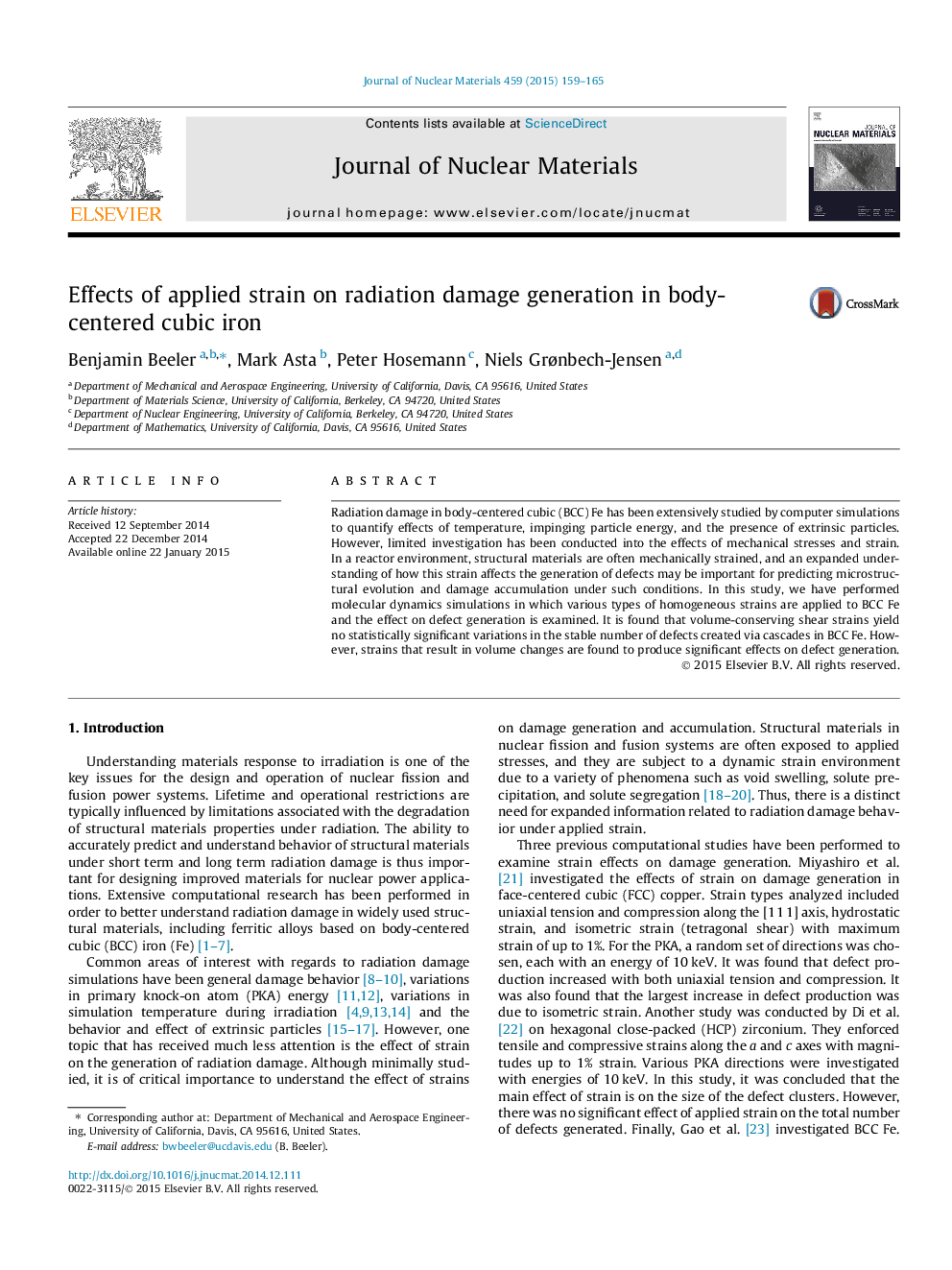| Article ID | Journal | Published Year | Pages | File Type |
|---|---|---|---|---|
| 7966388 | Journal of Nuclear Materials | 2015 | 7 Pages |
Abstract
Radiation damage in body-centered cubic (BCC) Fe has been extensively studied by computer simulations to quantify effects of temperature, impinging particle energy, and the presence of extrinsic particles. However, limited investigation has been conducted into the effects of mechanical stresses and strain. In a reactor environment, structural materials are often mechanically strained, and an expanded understanding of how this strain affects the generation of defects may be important for predicting microstructural evolution and damage accumulation under such conditions. In this study, we have performed molecular dynamics simulations in which various types of homogeneous strains are applied to BCC Fe and the effect on defect generation is examined. It is found that volume-conserving shear strains yield no statistically significant variations in the stable number of defects created via cascades in BCC Fe. However, strains that result in volume changes are found to produce significant effects on defect generation.
Related Topics
Physical Sciences and Engineering
Energy
Nuclear Energy and Engineering
Authors
Benjamin Beeler, Mark Asta, Peter Hosemann, Niels Grønbech-Jensen,
